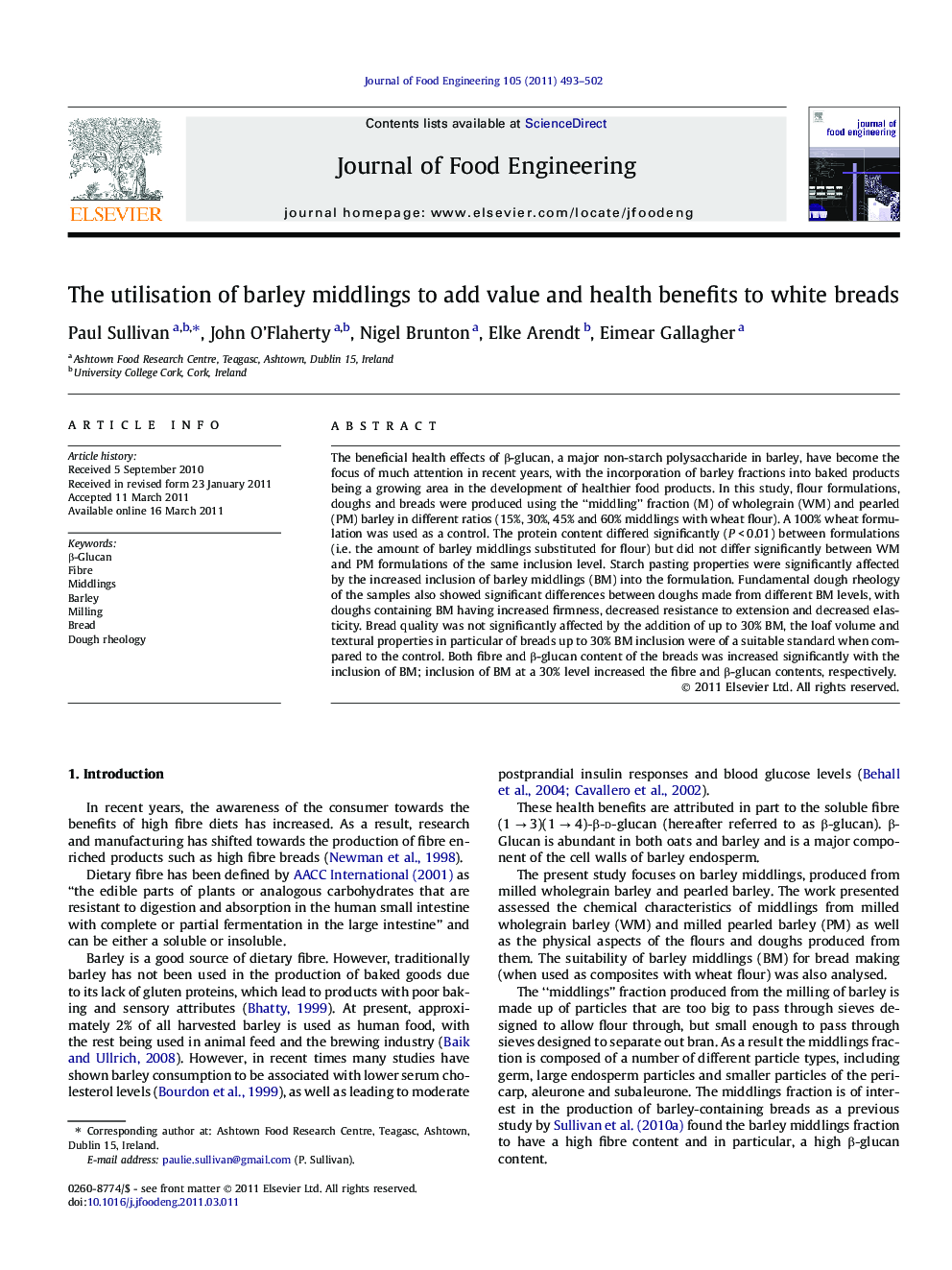| Article ID | Journal | Published Year | Pages | File Type |
|---|---|---|---|---|
| 223939 | Journal of Food Engineering | 2011 | 10 Pages |
The beneficial health effects of β-glucan, a major non-starch polysaccharide in barley, have become the focus of much attention in recent years, with the incorporation of barley fractions into baked products being a growing area in the development of healthier food products. In this study, flour formulations, doughs and breads were produced using the “middling” fraction (M) of wholegrain (WM) and pearled (PM) barley in different ratios (15%, 30%, 45% and 60% middlings with wheat flour). A 100% wheat formulation was used as a control. The protein content differed significantly (P < 0.01) between formulations (i.e. the amount of barley middlings substituted for flour) but did not differ significantly between WM and PM formulations of the same inclusion level. Starch pasting properties were significantly affected by the increased inclusion of barley middlings (BM) into the formulation. Fundamental dough rheology of the samples also showed significant differences between doughs made from different BM levels, with doughs containing BM having increased firmness, decreased resistance to extension and decreased elasticity. Bread quality was not significantly affected by the addition of up to 30% BM, the loaf volume and textural properties in particular of breads up to 30% BM inclusion were of a suitable standard when compared to the control. Both fibre and β-glucan content of the breads was increased significantly with the inclusion of BM; inclusion of BM at a 30% level increased the fibre and β-glucan contents, respectively.
